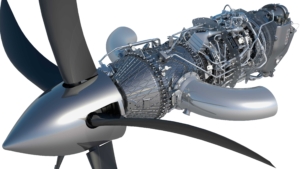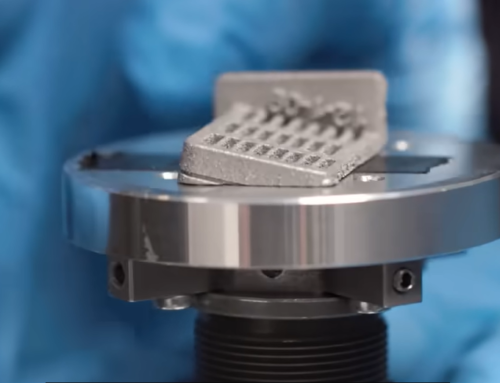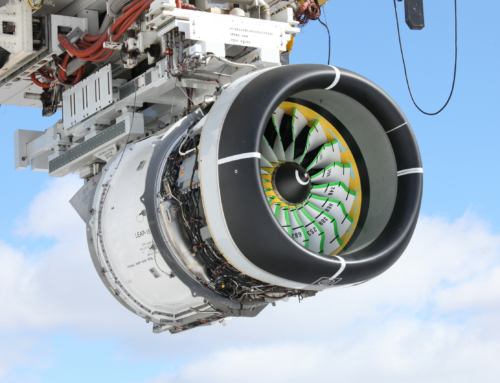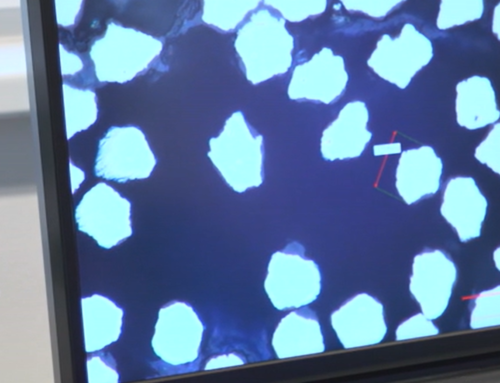 July 1st, 2016, was a day that will remain in the memory of the group of GE Aerospace engineers and cooperating with them engineers from the Łukasiewicz Research Network – Institute of Aviation in Warsaw. It was on that day when they started working on the project of Development of cooling technology for hot section components in rotating machines, with particular reference to high-pressure turbine blades and vanes for a modern turboprop engine constructed from scratch.
July 1st, 2016, was a day that will remain in the memory of the group of GE Aerospace engineers and cooperating with them engineers from the Łukasiewicz Research Network – Institute of Aviation in Warsaw. It was on that day when they started working on the project of Development of cooling technology for hot section components in rotating machines, with particular reference to high-pressure turbine blades and vanes for a modern turboprop engine constructed from scratch.
Currently, the project, co-financed by the European Union under the Smart Growth Operational Programme 2014-2020, is in the final phase. One of its key elements was coming up with an innovative technology of cooling, sealing and control of radial and axial clearances, dedicated to the hot section of the high-pressure turbine. The uniqueness of the whole project is increased by the fact that it is the first technology of this type developed in Poland.
As part of the project, numerous industrial studies and development works were carried out, in which a prototype of a high-pressure turbine was developed, and then tested in laboratory and near-real conditions.
GE Aerospace engineering team was actively involved in the turbine test planning, and in the design of the measuring equipment system, as well as conducted the design supervision over its proper assembly. During the tests themselves, the engineers monitored the course of research at laboratory stations and processed the data and analyzed the results obtained in the trials.
Due to the scale and complexity, the project was implemented in three stages to optimize the effectiveness of the engineering team’s activities and maximize the positive impact on the final result.
The first stage focused on conceptual work aimed at developing innovative solutions in the field of turbine component architecture, i.e., blades and nozzles, gas path sealing and optimizing the clearances the rotor blades and the stator. This stage was successfully completed with three verification tests, including flow tests, measurements of heat transfer coefficients, and measurements of cooling film degradation. 
In the second stage, the emphasis was on verifying the design assumptions and critical parameters developed in the first stage and testing them in the engine environment before performing the first test on a flying engine. The tests planned at this stage on the first and second prototype engines, as well as the vibration test of the blades and the overrotation test of the disk were successfully conducted in cooperation of GE Aerospace engineers and subcontractors from the Łukasiewicz Research Network – Institute of Aviation, as well as laboratories of these tests in Germany and Canada.
The third stage consisted of tests in the engine environment, carried out in a test cell under laboratory conditions: an altitude test in the baric chamber conducted on the third engine prototype (Altitude Test), reliability tests (Endurance Test) and long-term reliability tests in near-real conditions (IMI Test) carried out on the fourth and fifth prototype engines respectively, and the Overtemperature Test which was carried out on the sixth prototype engine.
Currently, after over 6 years of challenging work, hundreds of hours spent on technical reviews and expert consultations, the project of Development of cooling technology for hot section components of rotating machines with particular emphasis on blades and vanes is nearing completion. Its indisputable success lies not only in designing a modern turbine, but also in the engineering team gaining unique-on-a-global-scale competence in the design of cooled hot section components, which can be conveniently used in subsequent innovative projects.

Project part-financed by the European Union within the European Regional Development Fund.







